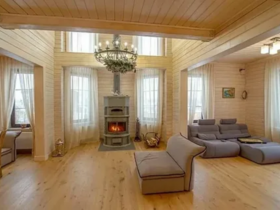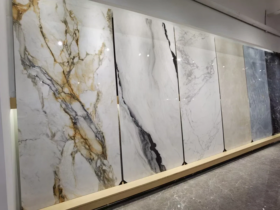To date, all kinds of insulation materials are used to warm the walls. Each of them is used in certain cases, and also has a number of advantages and minuses. In this article we will talk about what the advantages and disadvantages of foam concrete can be.
A few words about the manufacture of foam concrete
Foam concrete is a cellular material that is made as a result of hardening the mixture consisting of sand, foam, cement and water. Foam is made from a foam concentrate, which can be all kinds of inorganic or organic compounds. Receive them from real protein or in the manufacture of detergents. It is this foam that supports the balance and uniform distribution of air in the material.
For the first time, the technology for obtaining foam concrete (or it is otherwise called an artificial stone) was created at the beginning of the 20th century by the famous architect Ericksson. Later this material received a patent. And industrial production first began in Europe in 1929. After that, they began to actively use it in construction. Today, foam concrete is produced in more than 38 countries, and the annual volume is 50 million m3.
Foam concrete pluses and minuses
If you compare foam concrete with other insulating materials, then it has a number of advantages. First of all, it is worth saying that the walls with it are “breathing” thanks to natural ingredients that are part of it. Also, this material is easily processed and applied, therefore it can be used in completely different architectural projects. However, about everything in order. So, the main advantages of foam concrete:
Strength and reliability, which makes foam concrete almost eternal material. So, its compression strength on average is 4-5 MPa. Therefore, it can be used in the construction of structures with a smaller volumetric mass.
Heat — and sound insulation, thanks to the cellular structure of blocks. Provides thermal insulation 3 times higher than a brick wall. This allows you to significantly save on heating. On average, expenses are reduced by 20-30%.
Moisture resistance, since foam concrete has a closed-porous structure. Therefore, much less moisture is absorbed.
Fire safety and first class of fire resistance. According to the tests, foam concrete, which has a thickness of about 1150 mm, protects against flame distribution within 5 hours. At the same time, the material was heated to a temperature of 1200 C (that is, real conditions were created). Moreover, it does not explode and does not split. Thus, the reinforcement is under reliable protection.
Microclimate and lack of an environment favorable for the propagation of mold and fungus. All this became possible, again, due to the fact that foam concrete has an air-porous structure and does not pass moisture. And, as you know, it is moisture that is the best environment for the development of microorganisms.
The ease of material. For example, 700 brand is 3 times lighter than expanded clay concrete. A typical block used in construction has a weight of about 11 kg. Therefore, styling and transportation of material is carried out quite simply.
Economic installation. Blocks have an exact geometric structure (monolithic foam concrete). The size that the client is necessary (on order) can also be made (on order). Penoboton laying is carried out on glue, and the consumption of external and internal plaster is much less (since the minimum layer is applied).
Environmental friendliness of the material. Does not distinguish any harmful and dangerous substances for human life. More environmentally friendly foam concrete only wood.
Frost resistance, which allows the use of foam concrete in a variety of climatic conditions.
Wide area of use. So, it is used not only for insulation of walls and foundation, but also for floor, roof, pipes, partitions.
The disadvantages of foam concrete are not so numerous, but still, they are. If we compare this material with reinforced concrete, then it is inferior in mechanical strength. Also, to avoid deformation of foam concrete, when arranging the structure, it is necessary to make only a strip foundation. After laying the wall, they need to be finished, as they look aesthetically not attractive. On this, perhaps all, the disadvantages are over. As can be seen from the above, there are much more pluses.
The use of foam concrete
Foam concrete is used in various fields of construction. It is used not only in the construction of houses, garages, utility rooms, but also industrial buildings. Today, there is not a single sphere where this material could not be used. So, it is simply indispensable for thermal insulation of the Earth and the construction of foundations. It is also used as a sound — and a heat -insulating screed for the floor.
Recommendation: When choosing this material, be sure to pay attention to its density. Different climatic conditions need its own density and brand.
It is especially well suited in cases where the floors are unevenly laid in height. That is, also performs the leveling function. The most commonly used as insulation of walls and attics. They are also filled with wall structures and interior partitions. All this helps to significantly reduce heat expenses.













Оставить коммент.